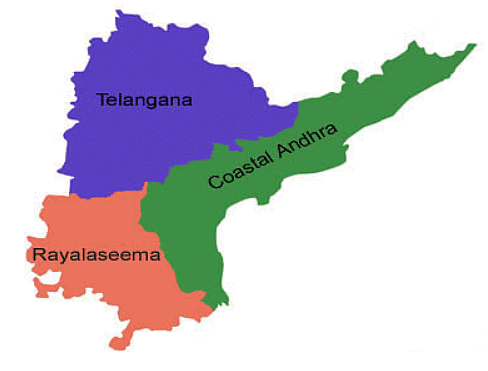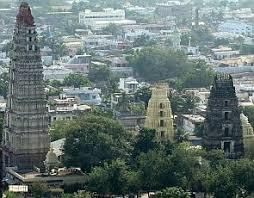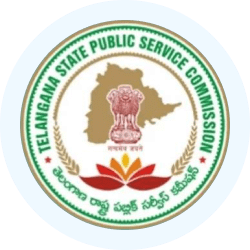TSPSC (Telangana) Exam > TSPSC (Telangana) Notes > Telangana State PSC (TSPSC): Preparation Course > Political History of Telangana
Political History of Telangana | Telangana State PSC (TSPSC): Preparation Course - TSPSC (Telangana) PDF Download
| Table of contents |

|
| Telangana Region: Location and immediate history |

|
| Telangana Bill |

|
| Seemandhra |

|
| About Telangana History and Telangana Movement |

|
Telangana Region: Location and immediate history

- Telangana was previously a part of the Nizam's princely state of Hyderabad. In 1956, it merged with Andhra Pradesh state.
- From 1956 to 2014, Telangana was a constituent of Andhra Pradesh.
- Telangana holds 119 seats out of 294 in the Andhra Pradesh Assembly and 17 out of 42 Lok Sabha seats.
Telangana Bill
- The Andhra Pradesh Reorganisation Act, 2014, known as the Telangana Bill, led to the division of Andhra Pradesh into Telangana and residuary Andhra Pradesh.
- The Bill was declined by the Andhra Pradesh Legislative Assembly on January 30, 2014, but was approved by the Lok Sabha, Rajya Sabha, and the President of India, Pranab Mukherjee.
Question for Political History of TelanganaTry yourself: When did Telangana become a part of Andhra Pradesh?View Solution
Seemandhra

- Seemandhra refers to the combined regions of Rayalaseema and Coastal Andhra (Costandhra) in Andhra Pradesh.
- Most of the area lacks industries and central government establishments.
- The term gained prominence during the Telangana movement to denote the parts of Andhra Pradesh that would remain if Telangana separates from the state.
About Telangana History and Telangana Movement
- Understanding the Telangana-Andhra issue involves multiple dimensions: social, political, economic, and historical. This summary aims to highlight key aspects of the complex Telangana-Andhra scenario.
- The name Telangana is thought to originate from "Trilinga Desa," referring to the three ancient Shiva temples at Srisailam, Kaleswaram, and Draksharama.
- During the Nizam's rule in Hyderabad, the region was divided into Telugu-speaking and Marathi-speaking areas, with the Telugu-speaking region known as Telugu Angana to distinguish it from the Marathi-speaking areas.
- Telangana has a rich historical background, having been associated with various ancient Indian kingdoms such as Assakajanapada, Satavahanas, Vakataka, Vishnukundina, Chalukya, Rashtrakuta, Western Chalukya, Kakatiyas, Qutbshahis, and Nizams.
- In 1799, under a subsidiary alliance, the Nizam ceded Rayalaseema and Coastal Andhra regions to the British (later part of Madras Presidency), while retaining control over the Telangana region.
- The Telangana Rebellion initially aimed to improve conditions for peasants who suffered under the Nizam and feudal lords, particularly from the Reddy and Velama communities. However, it evolved into a broader struggle against the Nizam himself, leading to demands for Hyderabad's merger with India.
- In 1947, upon India's independence from the British Empire, the Nizam of Hyderabad opposed merging with the Indian Union, preferring independence for Hyderabad under princely state provisions. However, India annexed Hyderabad State on September 17, 1948, through Operation Polo.
- The Telugu-speaking population was spread across various regions, including nine districts in the former Nizam's dominions, twelve in the Madras Presidency, and one in French-controlled Yanam.
- Potti Sreeramulu, a freedom fighter from Nellore district, spearheaded the movement for a separate Telugu-speaking state, considering the populace in both the Madras Presidency and Hyderabad State.
- Andhra State was established on October 1, 1953, with Kurnool as its capital. It comprised seven coastal region districts (Nellore, Srikakulam, Visakhapatnam, East and West Godavari, Guntur, and Krishna) and four Rayalaseema region districts (Chittoor, Kadapa, Anantapur, and Kurnool). Notably, Telangana was not part of Andhra State in 1953.
- The State Reorganization Commission, featuring members like Fazal Ali, KM Panniker, and HN Kunzru, proposed forming Visalandhra. This entity would merge Telugu-speaking areas of Hyderabad State with Andhra State, with Hyderabad as its permanent capital. The recommendation emphasized the benefits of unified control over mineral resources and the vast Godavari-Krishna basin.
- Paragraph 382 of the State Reorganization Commission (SRC) highlighted that while there was strong support in Andhra for a larger unified unit, public sentiment in Telangana was yet to solidify. Notably, key figures in Andhra recognized that any integration with Telangana should be based on voluntary consent from the Telangana populace, emphasizing that it was ultimately their decision.
- Initially, Prime Minister Jawaharlal Nehru expressed reservations about merging Telangana with Andhra State, fearing it might carry undertones of imperial expansionism. He likened the merger to a matrimonial alliance with provisions for separation if the partners couldn't coexist harmoniously.
- The Gentlemen's Agreement of Andhra Pradesh, signed before the state's formation in 1956, aimed to safeguard Telangana from discrimination by the Andhra Pradesh government. Alleged breaches of this agreement are often cited as a catalyst for demands for separate statehood for Telangana.
- The Telangana Movement stemmed from significant disparities between the Andhra and Telangana regions. Historically, Andhra, as part of the Madras Presidency, had higher education levels and development compared to the more feudal Telangana. Concerns in Telangana included fears of job loss to Andhra residents post-merger. Cultural distinctions, persisting even after decades of unity, also fueled the movement. Telangana's historical influences from North India and differing festival emphases added to the sense of disparity. Additionally, perceptions of exploitation grew as Telangana's surplus was believed to be channeled into the development of other parts of the state at its expense.
- The initial Telangana Movement gained momentum in 1969, primarily driven by students, and became historic due to its massive participation. Tragically, over 350 students lost their lives in clashes with the police, including shootings and baton charges.
- The Jai Andhra Movement emerged in 1972 as a political campaign advocating for the formation of a separate Andhra state. Activists in this movement demanded the removal of safeguards for the Telangana region to continue the existence of Andhra Pradesh as a unified entity.
- The Telangana Rashtra Samithi (TRS) played a pivotal role, led by K Chandrasekhar Rao (KCR). KCR, initially a member of the Telugu Desam Party (TDP), left the party in 2001 to champion the cause of a separate Telangana state, subsequently founding the Telangana Rashtra Samithi.
- The Srikrishna Committee, in its 2010 report, proposed six solutions to address the Telangana issue. The favored option involved maintaining the state's unity while simultaneously implementing specific constitutional and statutory measures to address socio-economic development and political empowerment in the Telangana region, notably through the establishment of a legally empowered Telangana Regional Council. The second option proposed dividing the state into Telangana and Seemandhra along existing boundaries, with Hyderabad serving as the capital of Telangana and Seemandhra requiring a new capital.
- Advocates for a separate Telangana state expressed grievances concerning perceived injustices in water distribution, budget allocations, and employment opportunities. There were allegations that funds allocated to Telangana often remained unutilized. According to the Srikrishna Committee's findings, since 1956, the Chief Minister position was held by individuals from Telangana for 10.5 years, while the Seema-Andhra region held the position for the remainder of the time (47+ years as of 2014), with Rayalaseema holding it for 27 years and coastal Andhra for 20 years.
- Opposition to the formation of a separate Telangana State arose particularly in the Seemandhra region, leading to the rejection of the Telangana Bill by the Andhra Pradesh Legislative Assembly and Council on January 30, 2014. This rejection was primarily due to the majority of legislators hailing from the Seemandhra region, although according to Article 3 of the Indian Constitution, only an opinion is required for such matters.
- Article 3 of the Indian Constitution grants the power to create new states to the Parliament. The Bill for creating a new state must be introduced on the President's recommendation and referred to the legislature of the affected state for their views. However, some argue that this provision implies that the views of the Andhra Pradesh Assembly hold no legal weight and that the formation of Telangana falls solely under the prerogative of the Government of India.
- Key provisions of the Telangana Bill include designating Hyderabad as the common capital for ten years, appointing the Andhra Pradesh Governor as the Governor for both successor states, declaring the Polavaram Irrigation Project as a national project, and placing its regulation and development under central control. Additionally, the Tungabhadra Board will continue monitoring water release for various irrigation schemes.
- In addressing concerns of the Seemandhra region, the Prime Minister announced a six-point development package, which includes granting special category status and tax incentives to the residuary state.
- Following the resignation of N. Kiran Kumar Reddy as Chief Minister on February 19, 2014, due to his opposition to the state's division, President's rule was imposed in Andhra Pradesh as recommended by the Union Cabinet. The Andhra Pradesh assembly was placed under suspended animation until its term ended on June 2.
- Key political players in Andhra Pradesh include the Indian National Congress, Telugu Desam Party, Telangana Rashtra Samithi, and YSR Congress. With the formation of Telangana, the political landscape shifted, with the Telangana Rashtra Samithi emerging as the dominant party in the region, credited with the achievement of statehood.
- Elections in 2014 were held in Andhra Pradesh as a unified unit for both Lok Sabha and assembly polls. Elected candidates automatically became legislators of their respective states following the formation of Telangana on June 2.
Question for Political History of TelanganaTry yourself: What was the initial aim of the Telangana Rebellion?View Solution
The document Political History of Telangana | Telangana State PSC (TSPSC): Preparation Course - TSPSC (Telangana) is a part of the TSPSC (Telangana) Course Telangana State PSC (TSPSC): Preparation Course.
All you need of TSPSC (Telangana) at this link: TSPSC (Telangana)
|
80 docs|74 tests
|
FAQs on Political History of Telangana - Telangana State PSC (TSPSC): Preparation Course - TSPSC (Telangana)
| 1. What is the immediate history of the Telangana region? |  |
Ans. The Telangana region has a history of separatist movements dating back to the 1950s, when the Telangana Rebellion took place against the ruling Nizam of Hyderabad. In recent years, the demand for a separate state of Telangana gained momentum, eventually leading to the passing of the Telangana Bill in 2014.
| 2. What is the Telangana Bill? |  |
Ans. The Telangana Bill, officially known as the Andhra Pradesh Reorganization Act, 2014, was passed by the Indian Parliament to create the new state of Telangana. The bill outlined the bifurcation of the existing state of Andhra Pradesh into two separate states, Telangana and Andhra Pradesh.
| 3. What is the Seemandhra region in relation to Telangana? |  |
Ans. The Seemandhra region, also known as Andhra or Coastal Andhra, refers to the Andhra Pradesh region that was not included in the new state of Telangana. It includes the coastal districts of Andhra Pradesh and the Rayalaseema region.
| 4. What is the Telangana Movement? |  |
Ans. The Telangana Movement refers to the political agitation and demand for a separate state of Telangana. The movement gained momentum in the early 2000s and culminated in the passing of the Telangana Bill in 2014, leading to the formation of the new state of Telangana.
| 5. What is the political history of Telangana? |  |
Ans. Telangana has a complex political history, with various political parties and movements playing a significant role in shaping the region's identity. The Telangana Rashtra Samithi (TRS) party, led by K. Chandrashekar Rao, has been a key player in advocating for the formation of the separate state of Telangana.
Related Searches




















